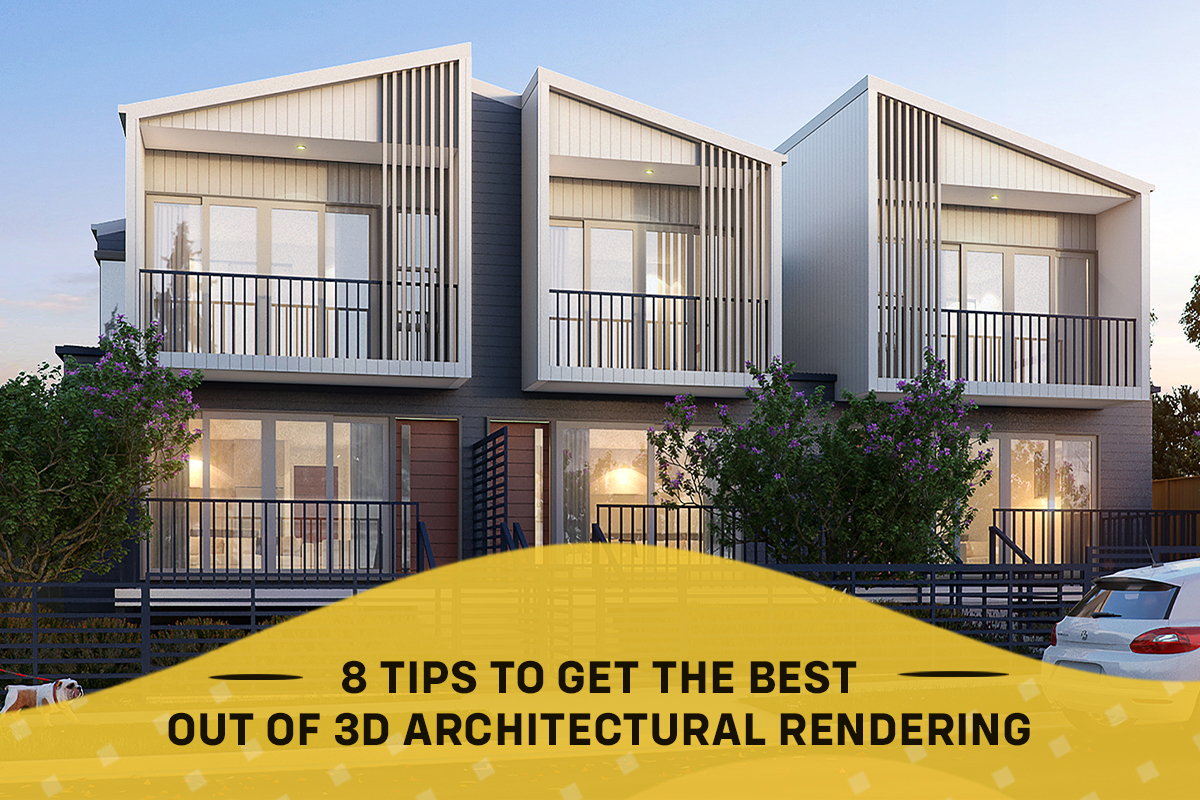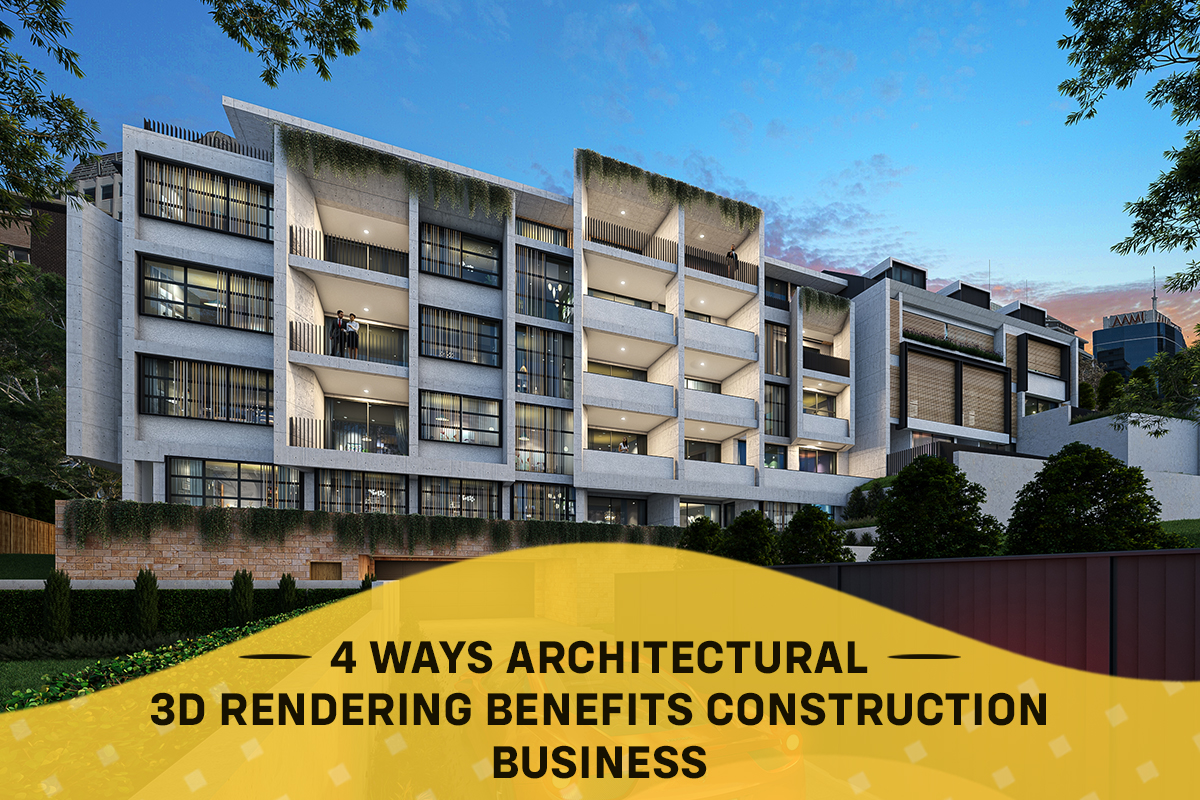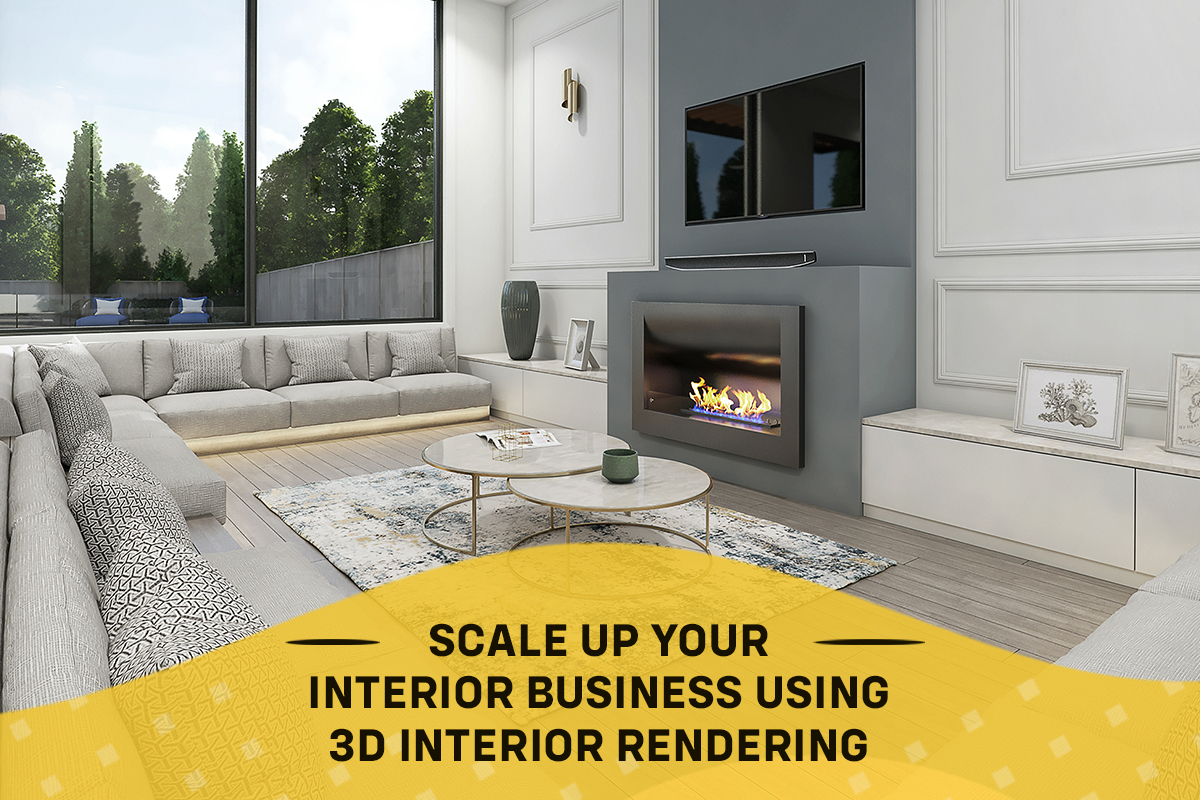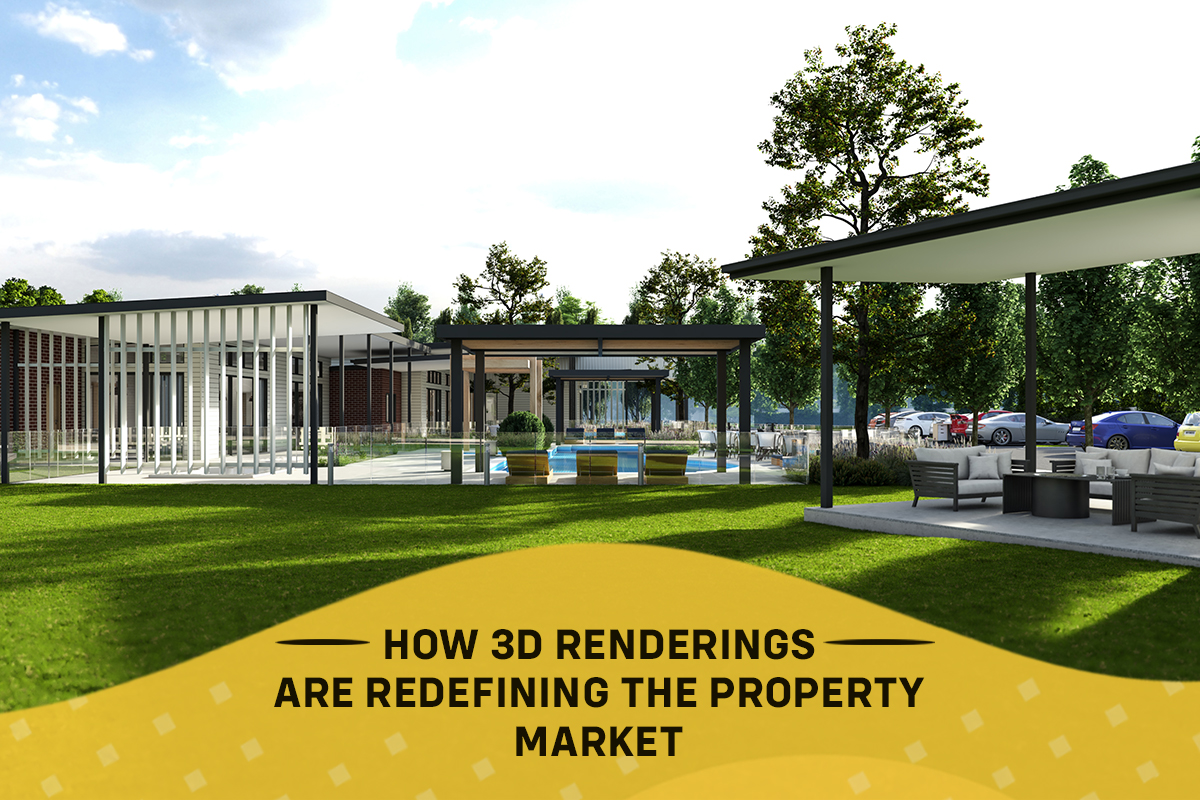A quality architectural rendering is all about designs that are offbeat, eye-catching, and a technological marvel that need not always follow the standard “rules” of design. The most appreciated 3D architectural rendering services are masters of designing distinctive compositions, styles, and narratives that are awe-inspiring while also providing functional benefits with utmost clarity. Having said that, there are several best practices and tips that can help you take your 3D architectural rendering services to the next level.
But before we understand “how”, we need to hit the refresh on the “what” of architectural renders, to get an in-depth understanding of it all.
What is Architectural Rendering?
3D architectural rendering is a process of digitally building or reproducing a space or a landscape in a simulated three-dimensional model. With the assistance of a best-in-class digital solution provider, you can produce an infinite number of 3D renders. 3D renderings are adjustable and versatile enough to deal with practically any visual issue. They can both recreate and capture existing landscapes and structures, whether they are photorealistic or creative in nature.
Read: How Architectural Companies Benefit from 3D Rendering
Smart Tips to Create the Best 3D Architectural Renderings
There are more ways than one to create eye-catching renders without having to be overly invested in the project. Here are 9 smart ways how you can achieve this:
Start Sketching
It might seem counterintuitive at first – sketching on paper when you want to create digital renders. But sometimes, you could find yourself putting a lot of effort into your project’s specifics before realizing the final product doesn’t match your original concept. Sketching your scenario before you begin not only gives you a crystal clear idea of how to go about rendering the project but also helps to keep you on the right track in the course of your work. The sketch can also serve as a reminder to keep your attention on the composition’s most important features if you veer off the main idea.
Supporting Cast
In order to tell the story you want to portray, you ought to have secondary characters in addition to the “main actor” on stage. Supporting characters in the case of 3D renderings typically appear in both the foreground and background of the picture.
In terms of exterior renders, these are mainly the trees, the pavement, the spaces outside the building, etc. Usually, it makes sense to give the foreground and background varied light intensities because it helps to strengthen the focus point.
Borrow Inspiration From Different Media
The majority of us limit our sources of inspiration to those that have only been skillfully executed in the medium we are currently working in. But the greatest artists in history have always looked to other forms of expression for inspiration.
Cinema is one medium that can offer an endless supply of concepts for architectural rendering. You get to visualize different kinds of structures, both interior, and exterior, and get great inspiration for creating your own. A pleasing picture is always required, whether it is an interior depiction or an outdoor view.
Using a realistic shopping complex scene as opposed to the actual lifeless building can be more appealing. This is why the real estate market finds it easier to sell furnished houses than those that are entirely vacant.
Trust Your Creativity
Most of the time, a subtle sense of self-doubt or inhibition keeps us from going with our natural instincts. This is a great feature for our social conduct, but when it comes to “creativity,” this part of our brain prevents us from coming up with something unique.
However, giving in to your creative side may be tricky and you might find yourself on the opposite end of the spectrum if you’re not careful. To understand how to break the confines and redefine structure, you must first thoroughly understand the ins and outs of 3D architectural rendering.
Photorealism is Not Reality
Learning to use the software and 3D rendering engines allows us to produce renderings, but producing high-quality 3D renderings requires much more than that. The geniuses who invented 3D rendering software and graphics engines built a mathematical and physical simulation of our environment. We can therefore replicate reality in that “fictional realm.”
We are essentially taking a photograph when we make an architectural rendering – that is, we’re lighting a scene and photographing it with a camera. Keeping this in mind will assist you in paying attention to how a camera works, which lens to use, and how to properly illuminate the subject. Among many other photography-related principles, you should consider the image’s composition, framing, color harmony, and focal points.
Virtual Representations of Real Materials
To accurately replicate materials in 3D renderings, we must first understand how to photographically “represent” them. This means that in order to construct the most accurate physical depiction of materials, it is necessary to examine how they react in actual situations.
It is critical to carefully observe them for this purpose. Start by looking for images of the subject. Examine how the material appears in real photography. Examine its characteristics, including its precise hue or pattern, the degree of reflection and refraction, glossiness, etc. Use all of this knowledge to make your work as realistic as you can.
High-Quality Components and Lighting
The elements that you use to fill your setting are crucial. The greater their complexity and intricacy, the more realistic the final 3D architectural rendering will be. Nothing lessens the authenticity of a setting than seeing furniture and other objects with rough or difficult geometry.
Lighting is also another essential component. To get beautiful lighting in a scene, you need a great deal of work and expertise. It’s not enough to simply add lights; those lights also need to appear authentic and natural. An excellent depiction can be distinguished from an average one by good illumination.
Avoid Wide Angles and Add Depth
Wide angle photography frequently results in poor composition. Sometimes it is best to portray only a small fragment of the space rather than attempting to capture it completely in one picture. Depth of field draws attention to specific areas of an image.
The concept of depth of field is used extensively in photography to enhance the visual appeal of the image. Additionally, it can provide a soft, opulent effect on the screen by establishing the mood.
Why is 3D Architectural Rendering Beneficial?
3D architectural renders have numerous benefits on the overall project output. Here are some of the many:
Precision
Your clients may have an idea of what their dream project should look like, but may not be able to fully visualize it. Many of the advantages of 3D architectural renderings derive from the superior control it provides to the resulting visual. 3D renderings also have the added benefit of it being a 3D model, allowing the human brain to quantify sizes and distances accurately.
Visualization & Updates
Imagining a 3D structure is far more challenging and tedious, especially when you need to provide constructive feedback to change or improve the design. Projects in the pipeline or the planning stage are prime candidates for 3D architectural rendering services. Architects, builders, realtors, as well as marketers often use 3D renderings to explore a range of choices without spending money on furniture, props, interior designers, etc.
The Marketing Angle
It’s not rocket science that selling an object you can see and visualize is easier than selling an idea. When your clients can visualize their new home or new office space, they are more likely to be invested in the project. 3D architectural visualization provides you with all the digital and visual media you need to market your services effectively.
Visualize Problems
Architecture is a precise science. Your measurements with respect to mass, force, distances, etc. need to be exact for the construction to not have structural issues. With architectural 3D rendering services, unforeseen variables can be simulated and visualized beforehand, hence avoiding any structural mishaps, and potentially saving a fortune in time and money.
Clear Communication
Again, people have trouble understanding something they cannot visualize or imagine, leading to miscommunication. With precise models and visualizations of 3D rendering services, overcome the communication challenge and ensure everyone from ground staff to the highest stakeholder is on the same page, working towards the same goal.
Read: Tips to Reduce Architectural 3D Render Cost
3D architectural rendering services have gained immense traction over the past decade, and it’s not hard to see why. The value of its use cases far outweighs any potential costs of setting it up, from visualizing and avoiding errors to precision marketing, making it a highly lucrative solution for architects and interior designers.
At Render Visuals, we deliver a wide range of 3D rendering services including architecture, to help bring your clients’ dream projects to life. Connect with us on www.rendervisuals.com.au or contact us at +61 -406822061/ 488805395 to know more!




